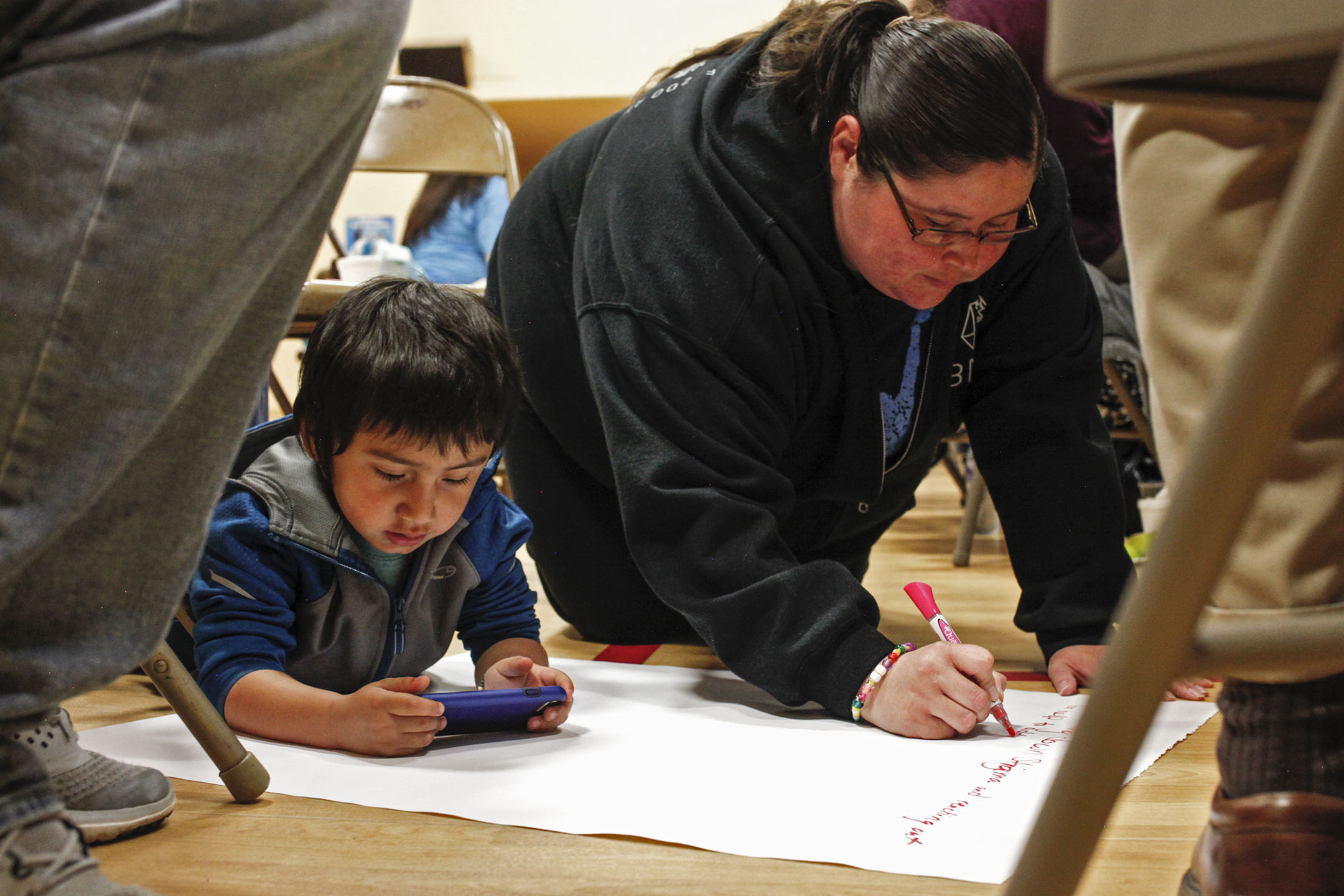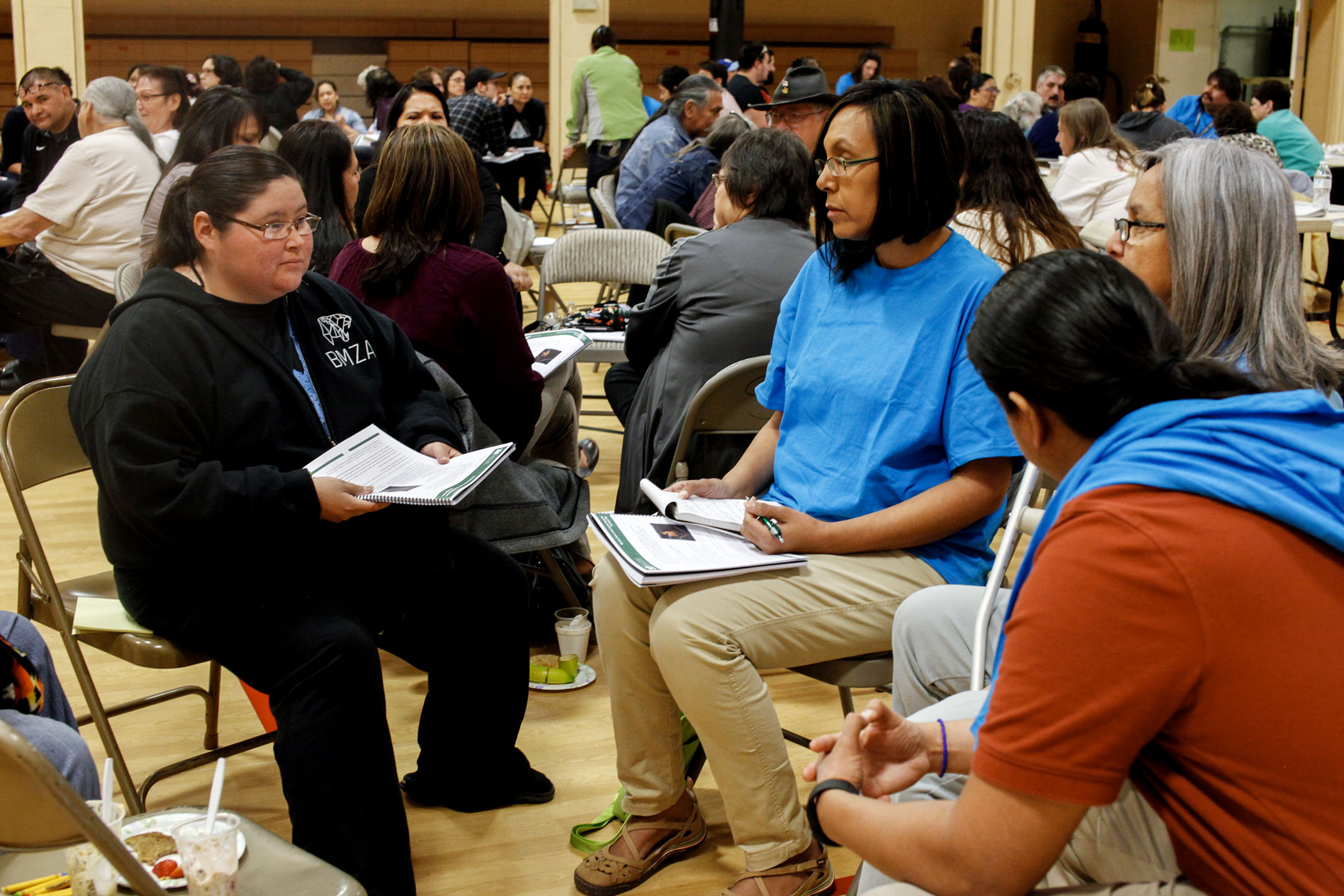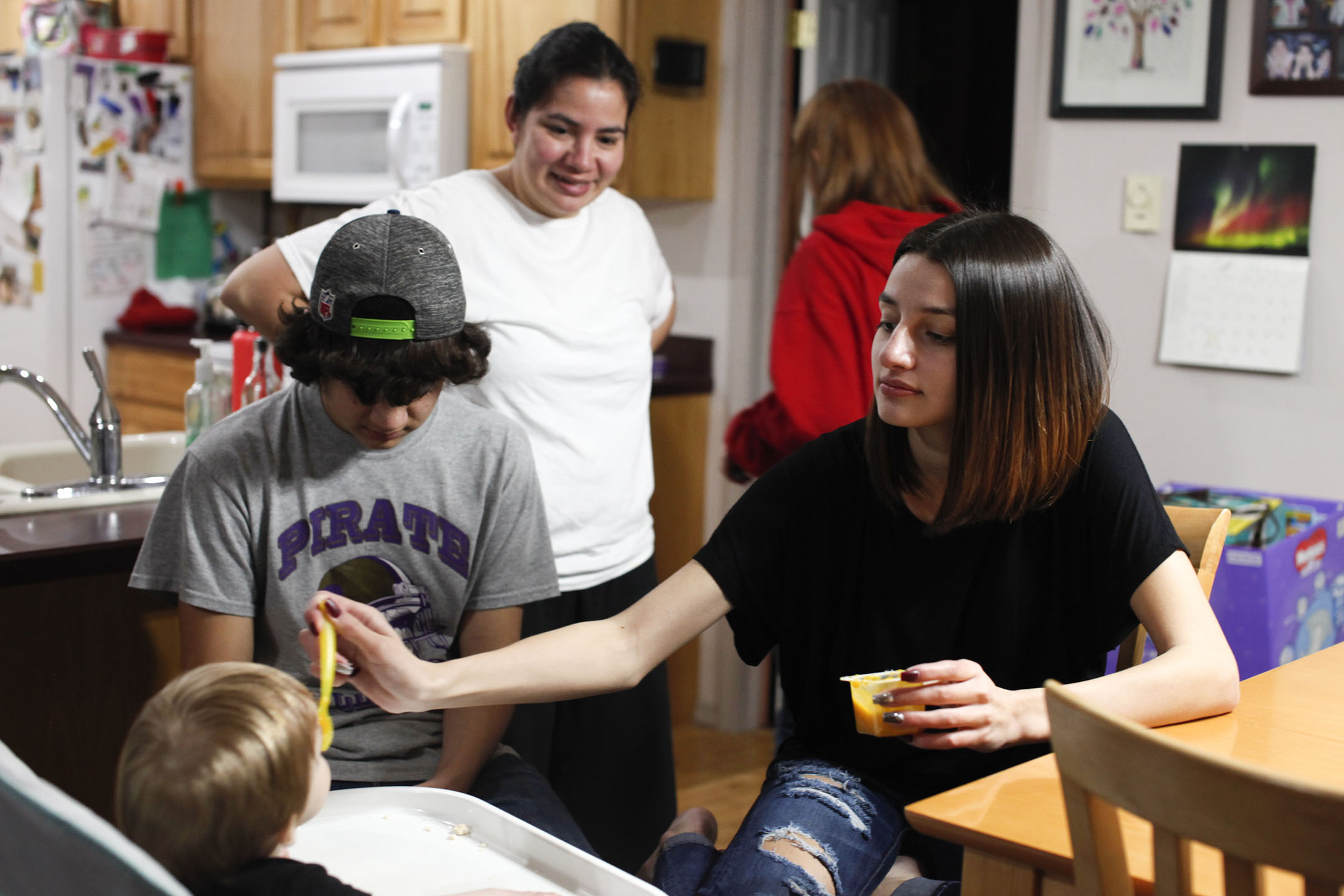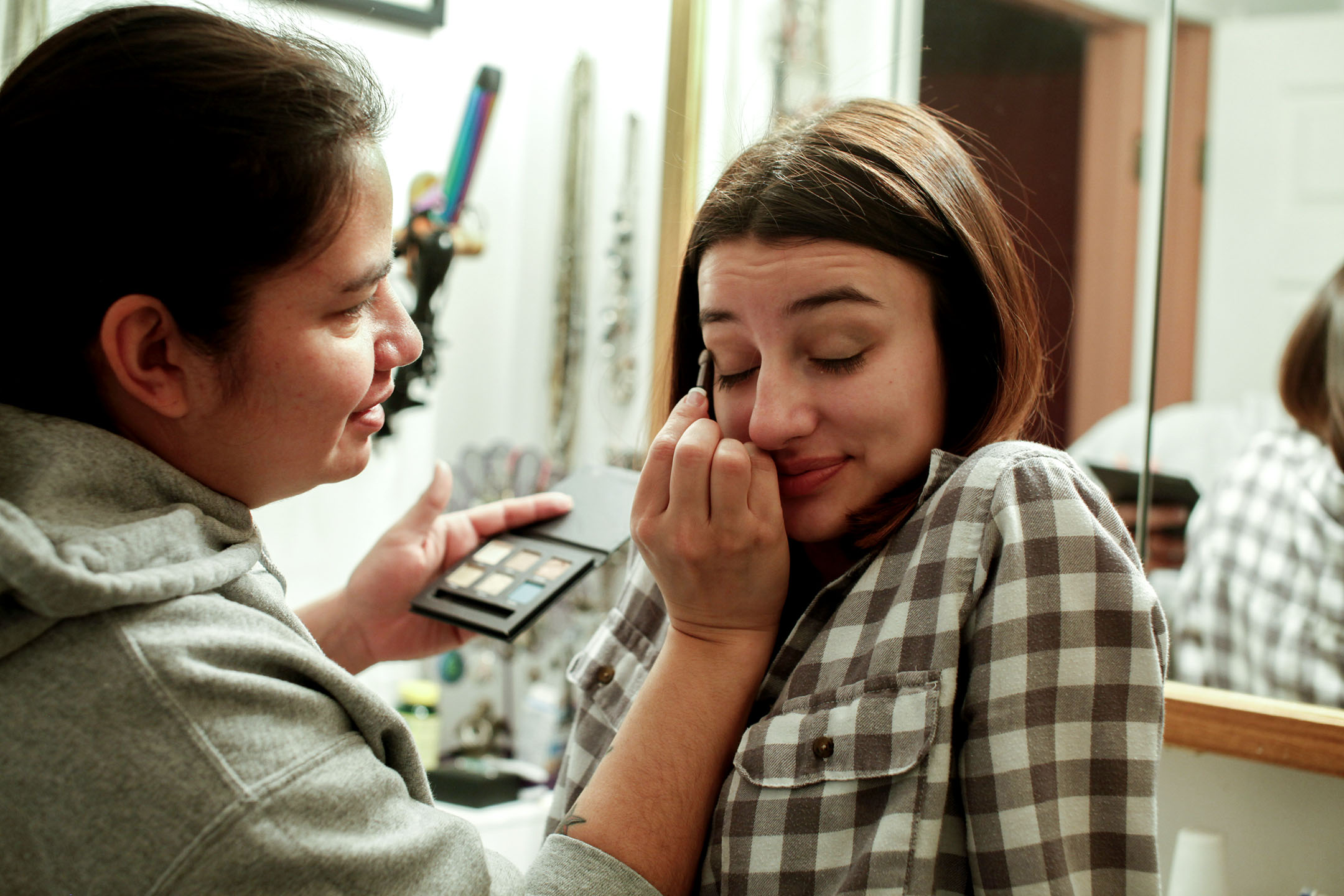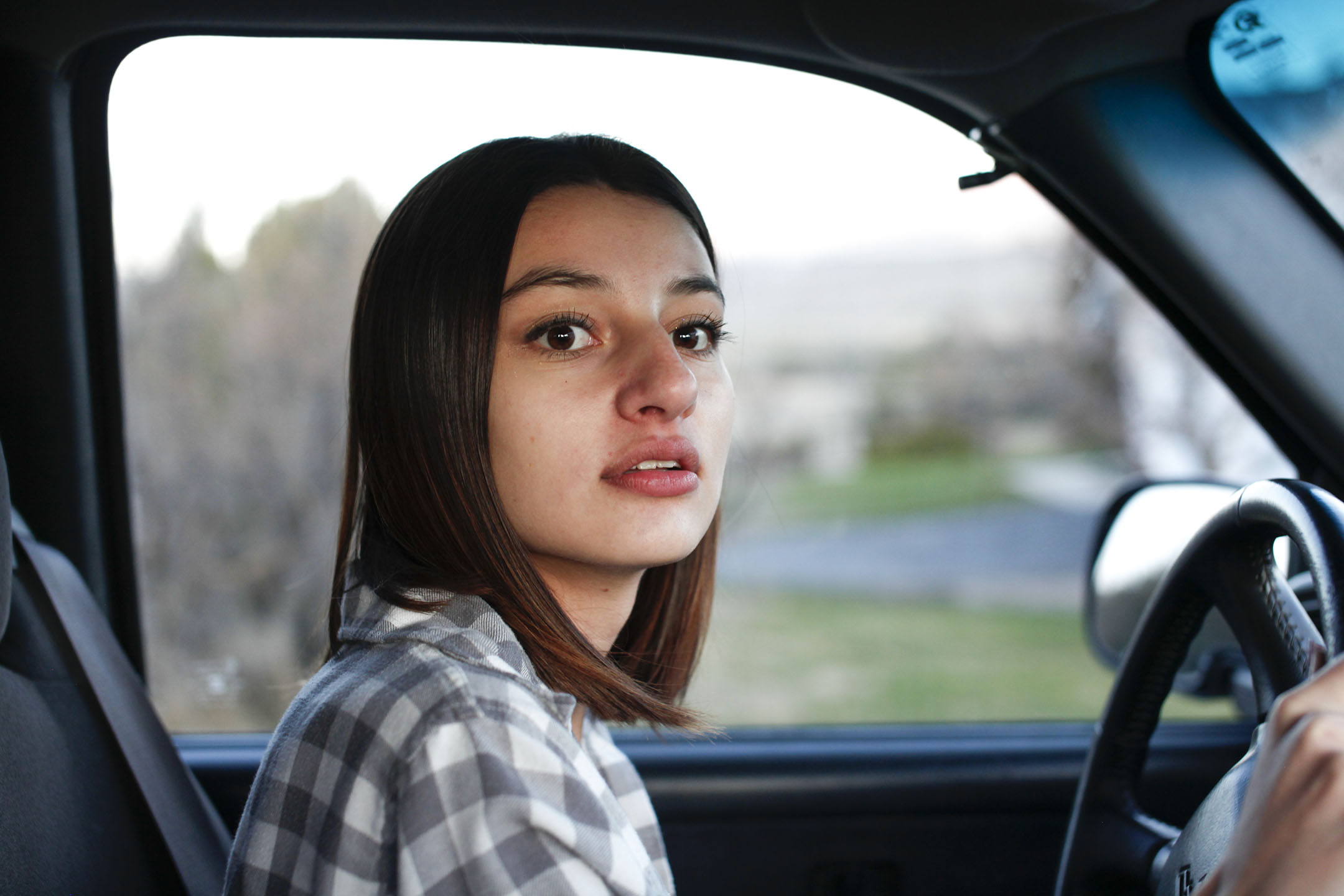Story by Courtney Brockman, photos by Sydney MacDonald
She never thought to seek out mental health services before. Not even when she started losing family members.
Megan Inmee didn’t know anyone in her family who had been to a therapist. It was a foreign concept, though it seemed one or two relatives died every year.
The 26-year-old from the Flathead Indian Reservation didn’t even know how to initiate an appointment with a mental health specialist. Then she lost her father. It was suicide and she knew she needed to get help.
“I wasn’t really open with it until it happened,” Inmee said. “I was like, ‘Oh man, I need to start talking.’”
Her boyfriend finally convinced her to go to Confederated Salish and Kootenai Tribal Health Clinic for counseling, because it had helped him a lot after he experienced his own tragedy.
However, she could only get in for an appointment through a family friend. When she tried to set up counseling for her 6-year-old daughter through Sunburst Mental Health Services in Polson, she did not receive a call back for nearly three weeks, a sign to Inmee that the facility placed mental health as a low priority.
After all, Inmee couldn’t recall ever having to wait for a dental appointment. She was shocked that there was a wait at all for a mental health appointment.
“It should be the opposite,” Imnee said. “I should have to wait a week or two because it’s your teeth. It’s important, but not as important.”
Inmee’s father was one of 10 people who have died from suicide since October on the Flathead reservation.
Inmee recognized that mental health needs, if unrecognized and untreated, can end in fatalities.
Montana has remained in the top five states with the highest suicide rate for nearly 40 years, and the Montana Native American population is especially vulnerable, with about 28 deaths per 100,000 people, as compared to 13 per 100,000 for the U.S. population. Native American youth in Montana die from suicide at a rate five times higher than other groups between ages 11 to 24 statewide, according to data from the Centers for Disease Control and Prevention and the Montana Department of Public Health and Human Services.
However, mental health services in reservation communities are scarce. And like Inmee, people are hesitant to seek out the services that are available.
The state addressed this by increasing suicide prevention programs. In April, both houses of the Montana Legislature endorsed House Bill 590, which would use $1 million for suicide prevention, especially for Native American youth.
Additionally, eight tribes and five urban Indian health organizations formed a Montana Youth Suicide Coalition to engage tribal health leaders, the Montana DPHHS, elders, veterans, health professionals and young people. The coalition published the Montana Native Youth Suicide Reduction Strategic Plan in January with funding from the Montana public health department.
According to the state health department, approximately 90 percent of suicide fatalities have at least one major psychiatric disorder.
Yet on the Flathead reservation, dedicated mental health facilities are limited. Patients in need of emergency assistance must wait at a facility in Polson, which has eight beds, until they can go to Missoula or Kalispell, and only if those places aren’t already full.
For now, Confederated Salish and Kootenai Tribal Health provides most of the mental health services on the reservation in a limited capacity.
~-~
Once used as a hospital by the Sisters of Charity in the 1950s, the Tribal Health clinic in St. Ignatius sits between a large red barn and the Mission Church.
In 1993, the Confederated Salish and Kootenai Tribes formally assumed management of health services from Indian Health Service by invoking Public Law 638, a federal law that allows tribes to take over programs previously managed by federal agencies. Tribal Health today is funded by grants, federally contracted money and billing for services. It is available to enrolled members or descendants.
In 2014, the Salish and Kootenai Tribal Council declared the health and wellness of the people as a top priority. Anna Whiting-Sorrell, regional head of Tribal Health and the author of the suicide reduction strategic plan, took that declaration seriously.
Whiting-Sorrell’s mission is to integrate medical care with mental health care.
“When someone hurts themselves, it is a medical emergency,” Whiting-Sorrell said. “If someone is suicidal, it’s a medical emergency. It’s not a flaw in their character.”
Enlarge
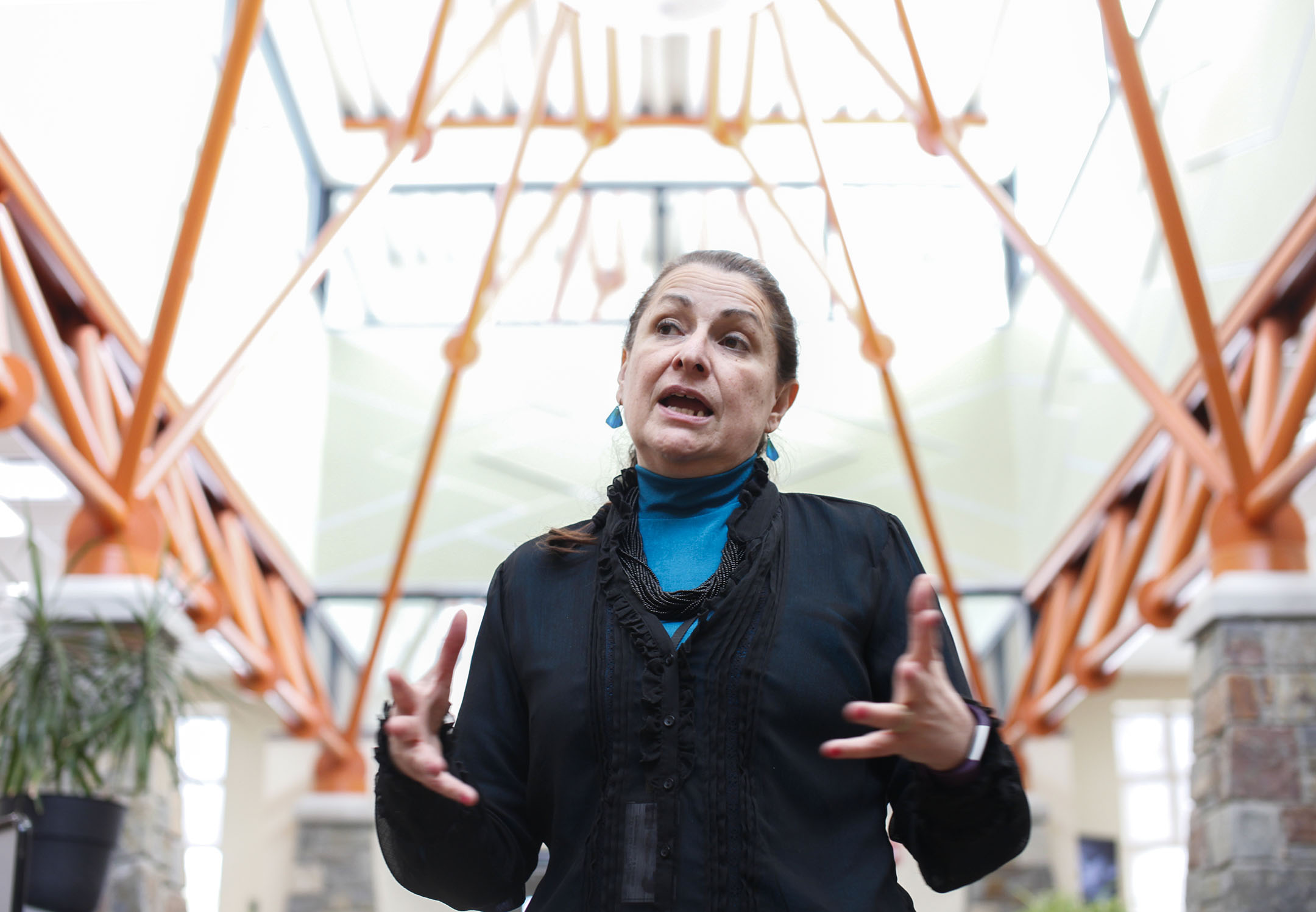
On a whiteboard in Whiting-Sorrell’s office is a simple mantra scrawled in marker: “Being in a good way.” Whiting-Sorrell said they must look at people holistically; physically, spiritually, emotionally and especially mentally.
“In the end, if you don’t feel good about yourself and want to take care of yourself, it doesn’t matter what the current issue of the day is,” Whiting-Sorrell said. “We have to figure out what do we do to build that in our people, that they want to feel well.”
Everyone at Tribal Health is trained on Question Persuade, Refer, a national training program that focuses on the best method for patients who might be suicidal. If the response to, “Would you like to see someone?” is “Yes,” Tribal Health either personally introduce the patient to a counselor or directly reach out to make referrals.
Down the hall from the medical wing, Behavioral Health is staffed with two clinical psychologists and about one dozen licensed clinical social workers and addiction counselors.
The head of Behavioral Health, neuropsychologist Jera Stewart, knows well the history of the community, its families and issues.
Stewart wrote three grants in her first five months at Tribal Health and brought in $1.5 million, mostly used for suicide and domestic abuse prevention initiatives.
Stewart also documented the correlation between people seeking out mental health services with changes in the community, such as when people got a settlement or when diabetes spiked. She found that holidays and powwows tend to keep community members grounded and give them more hope.
“So when there’s something in the community that happens historically, whether it’s in behavioral health or just something happening out there, it does make a difference in how people feel or how people cope,” Stewart said.
According to the 2010 census, non-Natives outnumber Native Americans 2-to-1 on the reservation. Stewart said everyone, tribal or not, must be taken care of, because everyone is tied together. If one person is not well, it ripples out.
However, when trauma does happen within the community, Whiting-Sorrell said it is difficult to stop and actually grieve. In the heart of the Tribal Health building is a smudge room, where cedar and sweetgrass are burned, for taking a break. Whiting-Sorrell said it is for the healers there to “be in a good way.”
“I just know that you got to take care of the people who work here,” Whiting-Sorrell said. “You never really know what is going to hurt you.”
~-~
When JaNessa Taylor, 16 saw a friend post on Snapchat that he couldn’t do it anymore, depressed that he couldn’t play soccer on the varsity team, she knew she had to reach out. She messaged him some encouragement and told him to just keep working at it. He saved that message.
JaNessa herself had been in his shoes just a year ago. It was winter, February, and she knew something was wrong when she could no longer look in the mirror.
She didn’t feel like the happy, straight-A 15-year-old everyone thought she was. Instead, she was overwhelmed by the sadness she felt for sneaking out to hang out with her boyfriend and, in her eyes, disappointing her community.
“It devastated them to the point I was devastated that I did it,” she said.
Even her normal outlet, playing soccer, couldn’t help. She documented her depression in an English essay.
“My shoes were gray and with every step, seemed to fade into a deep dark black,” her essay begins.
At one point, JaNessa asked her mom to sign her up for therapy, but changed her mind because she was embarrassed and scared.
She attempted suicide a week later.
JaNessa’s mom, Annesha Anderson, was in the middle of writing a senior thesis on suicide for her nursing degree at the time. Anderson lost her brother to suicide six years earlier, and a poem written in scratchy handwriting, “Miles’ Remembrance,” hangs among the family photos in the dining room. She said she had no idea her daughter was also in such a dark place.
Enlarge
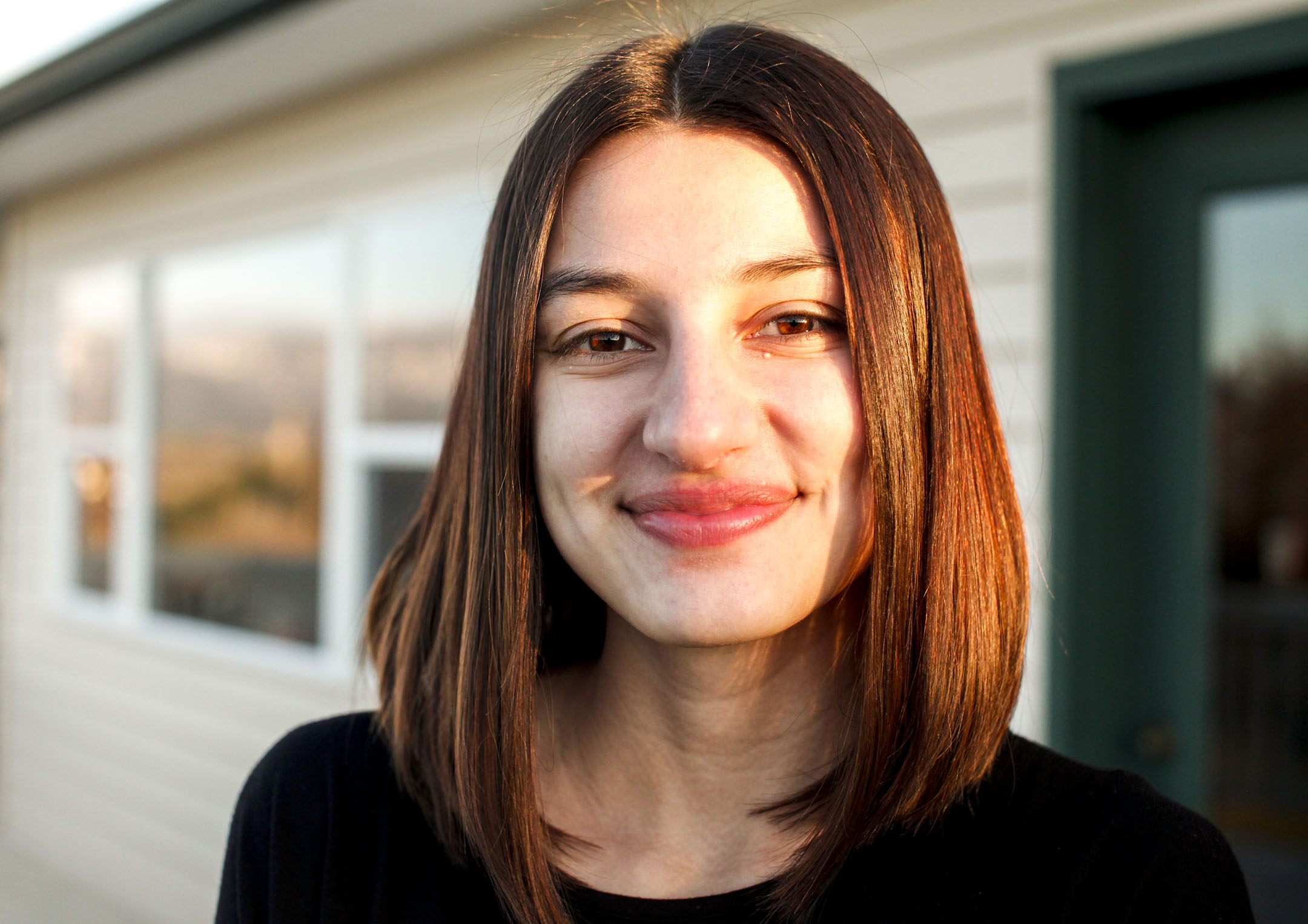
“You think it’s not going to be your child,” Anderson said. “Nobody wants to say it, that that’s going to be my child.”
JaNessa spent five days in the emergency room. At one point, the mental health worker said JaNessa could go home, but Anderson fought to keep her in the hospital longer to receive intensive therapy.
Anderson’s background allowed her to advocate for JaNessa, but not everyone is that lucky.
As a nurse and Obstetrician manager for St. Luke Hospital in Ronan, Anderson sees a lot of people come into the ER during the climax of a mental health crisis or after a suicide attempt. The mental health worker who is on call at the time determines if a patient can go home.
“Sometimes we’re holding on to these patients on the floor and by that time, their crisis is over, and then they deem them not harmful to themselves, and then they send them home without getting them appropriate care,” Anderson said. “And so, it can be a couple days. Which is really unfortunate.”
JaNessa now receives medication and regularly sees a therapist at Tribal Health.
~-~
Rosemary Epperson, JaNessa’s therapist, is a licensed clinical social worker and one of six clinicians at Tribal Health.
Each morning, behavioral health specialists meet with the medical clinic to go over a list of people who may need counseling later and make sure clinicians are available at certain times to refer patients. Walk-in appointments are also available.
Epperson said many reach out for services, but few actually show up. JaNessa thinks people do not seek out help because of the stigma.
“It’s like people walk around with these walls built around them and when someone cracks it’s like, ‘Oh, his wall’s cracked, that’s not good,’” JaNessa said.
Enlarge
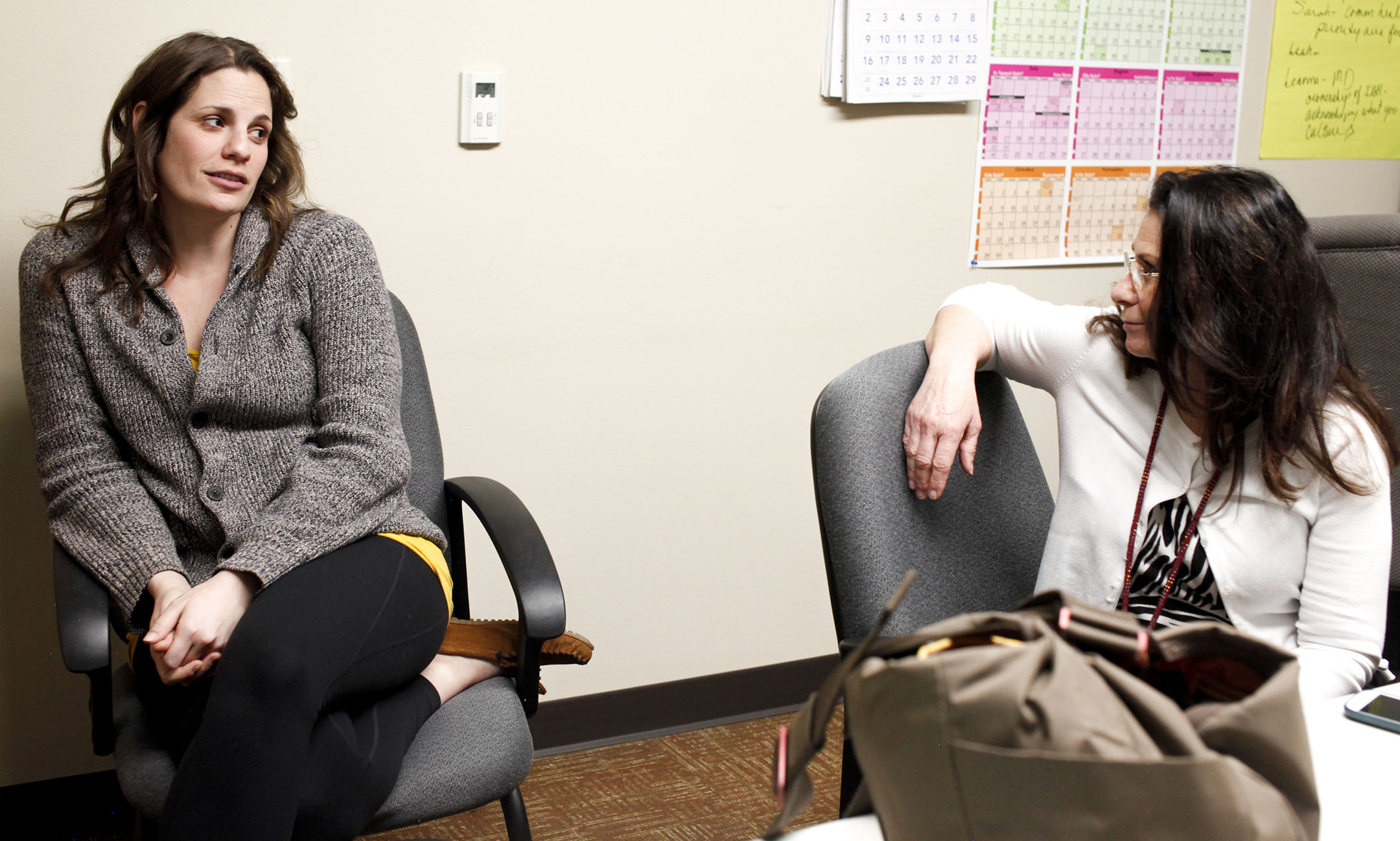
Epperson said people instead self-medicate through hard drugs. Patients disappear from therapy. The suicide hotline receives up to 12 calls a week. Like JaNessa, many patients wait until they have to go to the ER for a mental health emergency. If someone does not end up in the ER, they may go to jail.
“People are very, very scared to come to Tribal Health,” Epperson said. “It’s a really small town, and with the tribal element, there’s a lot of tight families and people who are just related and close to each other, and they’re really scared of gossiping.”
Sometimes elders are hesitant to come in because they may view medicine with suspicion.
Epperson also sees Native American men as the most difficult to get through the door.
“I’ve been told, ‘Look, I came down here three times and made three different appointments, but turned around in the parking lot because I was raised to believe an Indian man who’s being strong should never do something like this,’” Epperson said.
~-~
A few miles down the road, Patty Stevens, 57, takes a different approach to mental health issues.
Stevens, whose only rule is “don’t knock the second time you visit,” is a tribal council representative. She runs a horse camp for kids, a moccasin- making circle and other cultural events that bring people together.
“We’re just doing good, positive behavior,” Stevens said. “And I think there’s something to that. I think it’s a way of healing.”
Firmly against a Band-Aid approach to problems within the community, Stevens has tried to educate herself and others on suicide prevention by attending training and spreading the word. She also talks to her grandson about his struggles with depression to understand more.
Enlarge
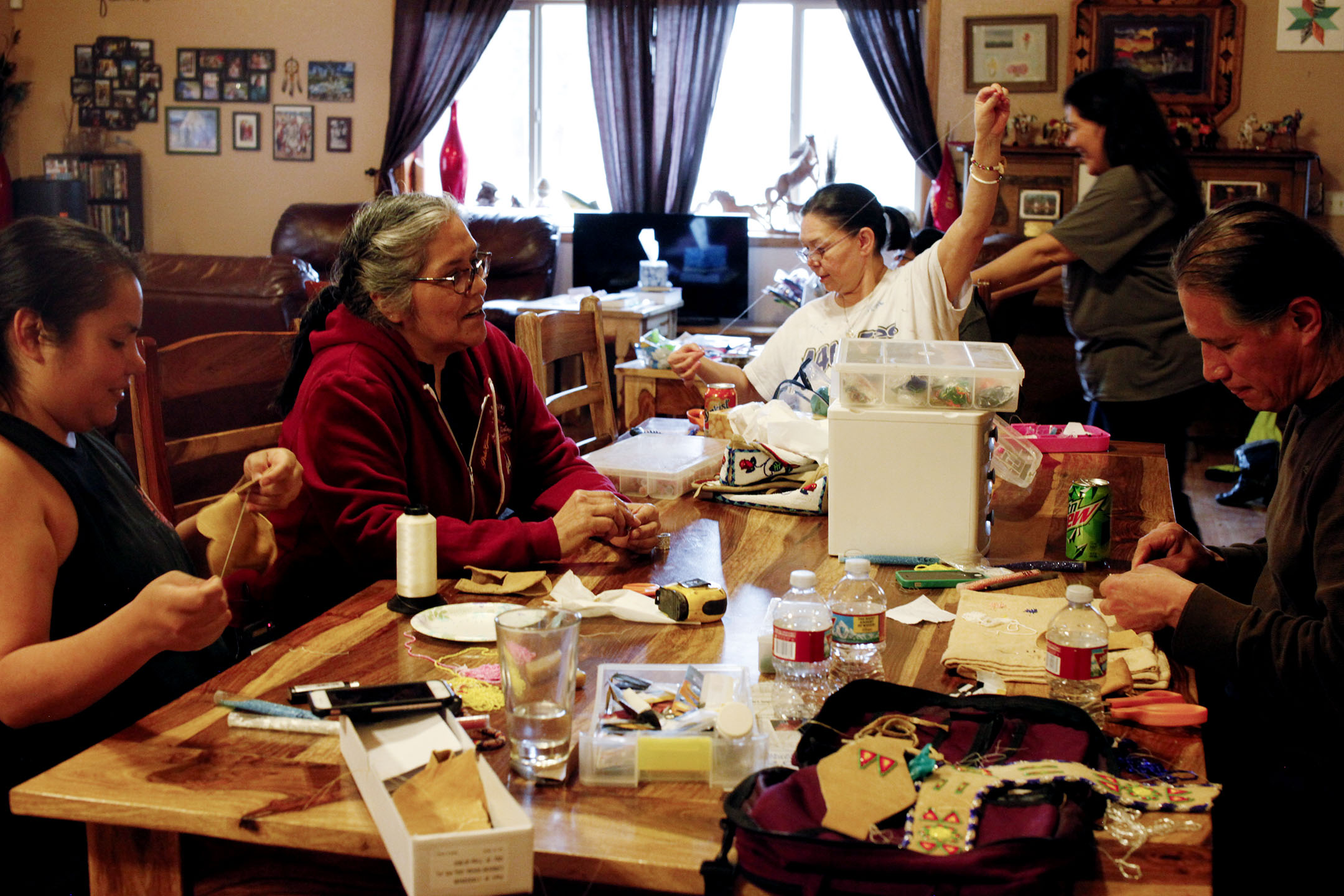
Her grandson explained it as feeling like the worst day of his life seven days a week. Although he struggled with low self-esteem and eating disorders, he never thought about suicide until his dad killed himself.
Stevens thinks a lot of depression is linked to low self-esteem, so she focuses on training younger people.
“We got to take better care of our kids so they don’t get themselves into those kinds of situations,” Stevens said.
Through a Unity Leadership ministry, Stevens and her husband, Willie, work to help young people recognize someone in trouble and allow them to talk about what is going on in their lives.
Stevens opens up her house as a safe place for people to talk or to get clean, even if they don’t necessarily have conversations about their struggles. She also engages with people on Facebook who post suicidal thoughts and privately messages them.
Stevens’ grandson told her that suicide attempts are the result of a buildup to the moment, not just the result of an instant thought.
“I thought if you could spend so much more time building the self-esteem or the ‘I’m worthy’ kind of stuff in people, then it won’t ever get to that,” Stevens said.
~-~
Megan Inmee sat in the back of the Tribal Fitness Center in St. Ignatius, surrounded by her mother, her brother and his two sons, behind a semi-circle of about 80 people.
Food covered a table. Everyone bowed their heads as someone asked the Creator to watch over the assembly, announcing: “We are all one family.” Tribal Health mental health professionals stood by in blue t-shirts to help people who might want counseling.
Patty Stevens sewed beads onto a moccasin. Anna Whiting-Sorrell wandered among the crowd. Everyone was gathered for a community conversation to address the recent suicide cluster on the reservation.
During the conversation, the facilitator read over the suicide reduction strategic plan. She told everyone to break into groups and “make the vision real.”
Potential solutions appeared on sheets the groups wrote on: make people feel accepted, have safe places where people don’t feel isolated, bring people back to their roots, reach out to elders and hold positive activities for children.
Inmee agrees with holding more activities for young people. She wants younger generations to know that it is okay to get help, so they don’t feel lonely or that they can’t talk about things. She especially wants grieving families to come together.
She said that even a brief “I know how you feel,” can help.
Inmee and her family now must move forward, but her hope is that Tribal Health will be more consistent in holding community conversations and activities, improving their response time and advertising their mental health services more, not just as a response to a suicide cluster. She wants more people to show up to the events and hopes there will be change.
Whiting-Sorrell, amazed at the number of people who showed up for the community discussion, said Tribal Health will not need to hold a similar conversation. She hoped the strategies brought up in the workshop will last long term.
~-~
JaNessa Taylor talks about how she has grown as a person in her essay:
“I wanted to try on some new shoes, and I was now in the right place at the right time with all the help I needed.”
After her suicide attempt, JaNessa opened up to her soccer teammates and to her boss at Hallmark about what happened. Her relationship with her mother has also grown stronger. JaNessa said she would “step right on it” if she saw any symptoms in her siblings, who all sat on the couch ready for school when the ambulance came to get her that day last winter.
Enlarge
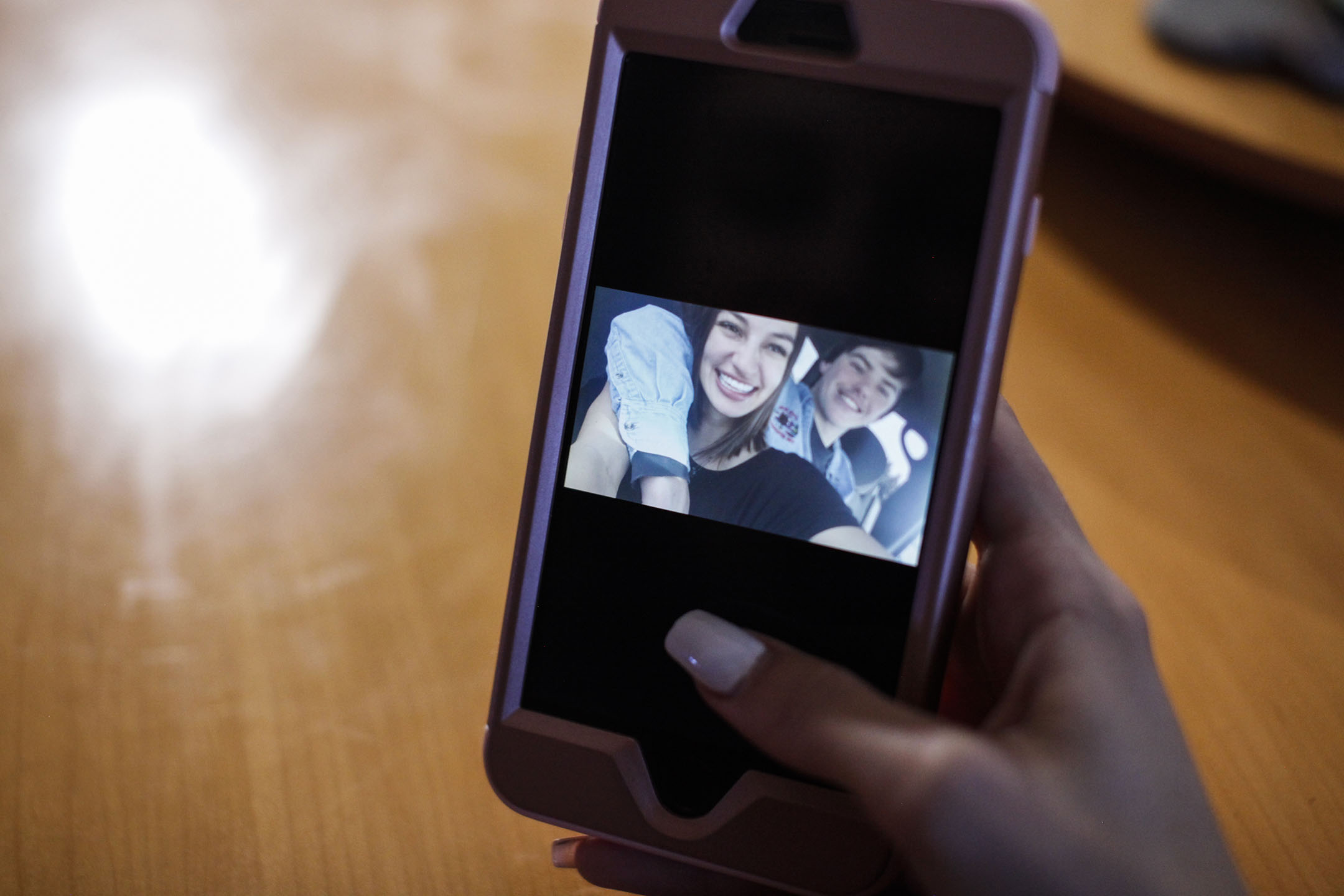
But she would like to see more conversations happening. Although people post on Facebook about suicide attempts, they don’t necessarily talk about it, especially in schools. And their symptoms do not change.
“Sometimes they could think they are reaching out or having a conversation in the hopes of getting help, but in reality it could be hurting them,” said Brandy Couture, program manager at the Center for Prevention and Wellness at the Salish Kootenai College.
JaNessa thinks holding assemblies over mental health would help. She said now that just having someone to talk to about mental health is more relieving than medication.
“It’s like getting your hair cut at a salon,” JaNessa said. “Everybody needs to get their hair cut. I see it like that, just the same. You need to get your hair cut, and you need somebody you can talk to. I don’t know why it’s such a rare thing.”
For past Native News editions visit the archive here.
